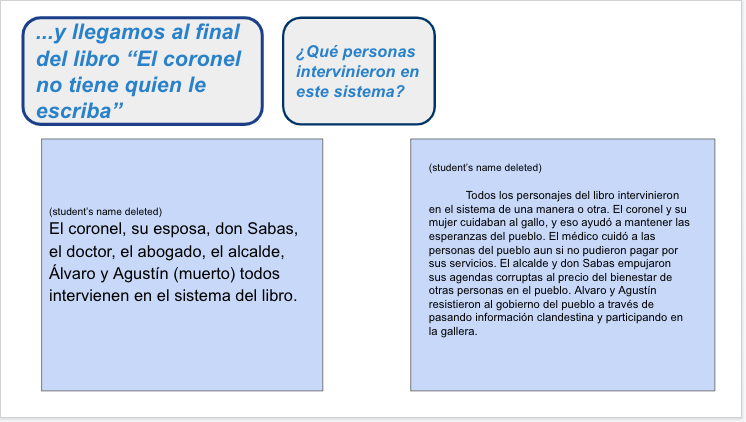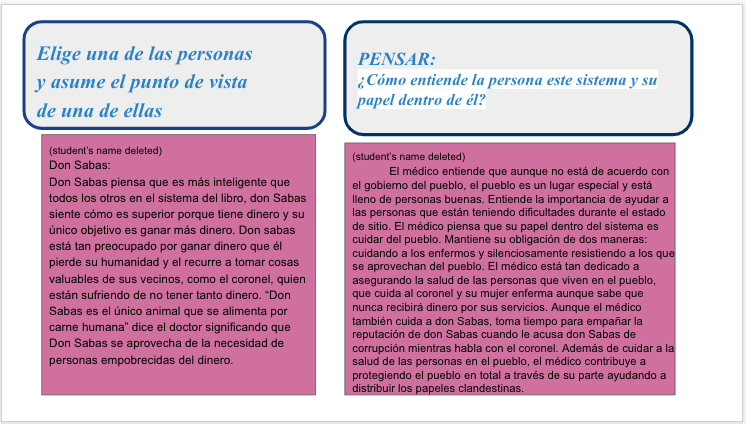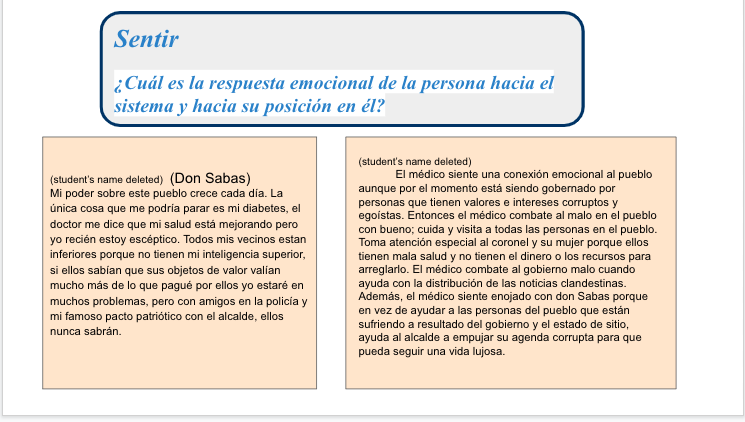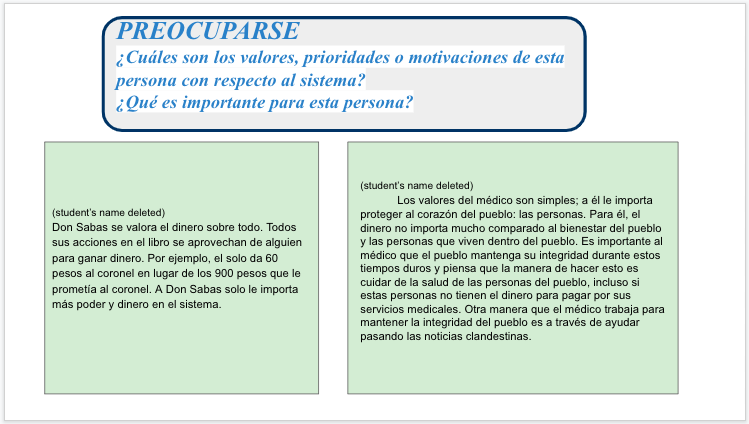DCPZ In Action, Vol. IV: Ana Maria Nicolich

“DCPZ In Action” is our feature that highlights the many ways in which DCPZ educators are using Project Zero ideas in their practice. We hope that our readers will be inspired to try something new in their own setting. Each of these articles will also be posted in a DCPZ Newsletter as well as published blog posts on our Professional Development Collaborative website.
In this edition, we hear about Ana Maria Nicolich, an Upper School Spanish teacher at Washington International School.

A couple weeks ago the students of Spanish B grade 11 finished reading El Coronel no Tiene Quien le Escriba by Gabriel García Márquez. The book is about a veteran of war waiting for a letter that will approve his pension, while the colonel and his wife live a miserable life in poverty during a repressive government.
Inspired by the JusticexDesign seminars led this year by Sarah Sheya from Project Zero, I applied some Agency by Design routines as tools to get the students thinking. My goal was to engage students while deepening their thinking and awareness about systems of oppression and power, and of the selective silence caused by these systems.



